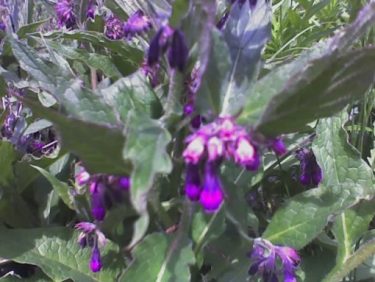
Althaea officinalis
Marshmallow in an ancient medicinal herb that is a real favourite with both bees and hummingbirds. While it will not stand up to foot traffic, it will hold up well in heavy rain and wind.

Growing Information:
Zone 3 – 9
Common Marshmallow is a tall upright perennial herb plant with a profusion of lovely little white and purple flowers. It is easily started from seed and will sometimes flower in the first year if it is started indoors eight weeks before the last frost date.
It is very hardy during its dormant stage and will even survive being tilled under. Marshmallow will hold up well in heavy wet weather but if it is trampled, the plant will not recover for that season, although it will come back the next year.
During the first year Marshmallow should grow to at least three feet. In following years it can easily reach six feet in well nourished soil. Marshmallow likes full sun but will tolerate a partially shaded spot as long as it gets mid day sun.

Notes:
There are several different useful species in the Althaea family but care must be taken not to plant any perennial varieties too close to this variety. Otherwise it would be possible to create a hybrid of the two that would not accurately reproduce either of its parents in following years.






























 Growing Information
Growing Information



 Growing Information
Growing Information
